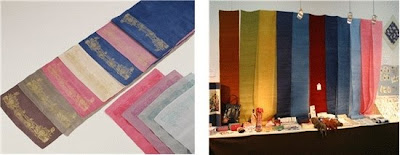Here I would like to share my experience from my country here in India. India is a big and land of multi-dimensional culture shared with different ethnics, caste, culture as well as religions reside under one roof. On top of this India is the largest movies producing country. Bollywood the film city of India is compare with the Hollywood of west. Unlimited production of movies creates Indian cinema among the Inidan masses a big place. That's the reason why it is a bit difficult to break-through and surpass by the Korean movies and culture although , electonic products from the brand names like Samsung, LG'S, Daewoo,Hundai , Lotte etc become household names in every corner here in India.
Korean companies are flourshing in most of the big cities in India due to Korean Companies the demand rate of learning Korean language become populated. Even though, the popularity of Korean soft products like movies and dramas are slow in pace.
On the contrary of the above given information, here I would again like to share you about the popularity of Korean movies, drama, K-pop and fashion in the other corner in India.
North-East part of India has been always different from the other part of the country in every ways for example food habit, ways of living, life style, physical appearence. In these particular area people are highly appreciated Korean culture as weall as Korean dramas and movies , starting from an old age to the younger generations.
When we asked why they are so much into the Korean items and the movies, they said ther feel very inter-connected with their appearence and the cool picturisation. Most of the youngsters like all the k-pop singer due to Arirang channel and KBS channel.
At this moment,for the first time some of the foreign nations
are participating food festival held in Imphal, Manipur which is going on till 1 may. Korea, China , THailand and Tibet are the four countries participating among the local food stalls.
As I already mentioned earlier, starting from small children to the old people are crazy over Korean items are hogging into the Korean stall only. Since this is the first time the Korean stall sell few items especially the famus Kimchi, Kim, Kim-pap, and syngupsal.
Youngster keep visiting the stall just the see the glimpse and meet the stall owner and say some few greeting like "Annyong-haseyo" and "Khamsha-Hapnida" as they have learned from watching the Korean movies and dramas...
A charming lady of Thailand stall
This is an intersting experience which I am experiencing here in my home-town, I am so excited to see how much people of North-East India specially the Manipuris love the Korean items and the Korean people. They are looking forward to see and experience like this.... as the Manipur University will be introducing Korean language subject in the University.
The two awesome owner of the Korean stall
I hope if both countries government takes initiative to open Korean world here in this place it will be a great beneficial for both the society as well as both the countries.
A Manipuri family enjoying Korean Kimchi and other items from the foreign stalls







